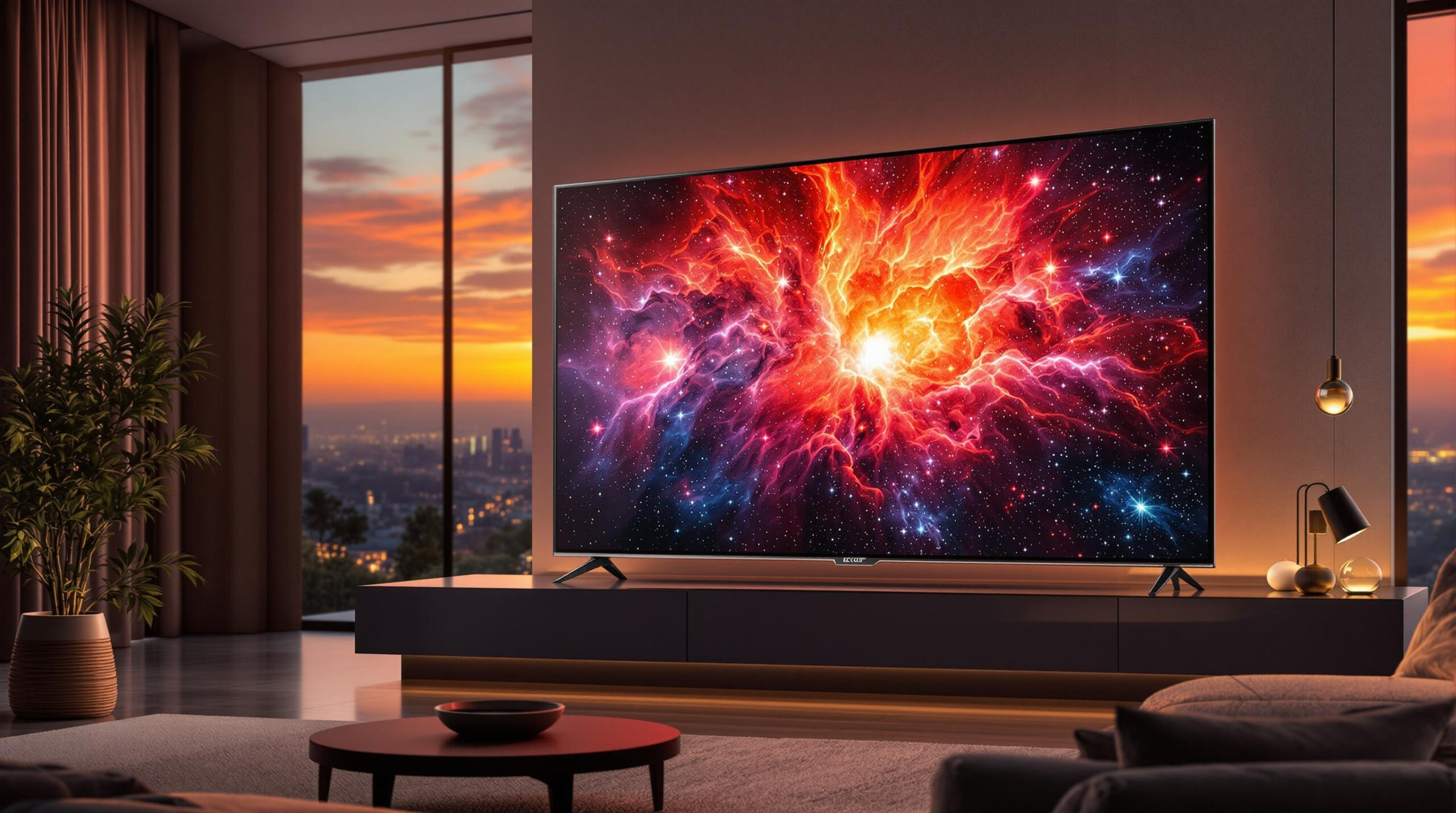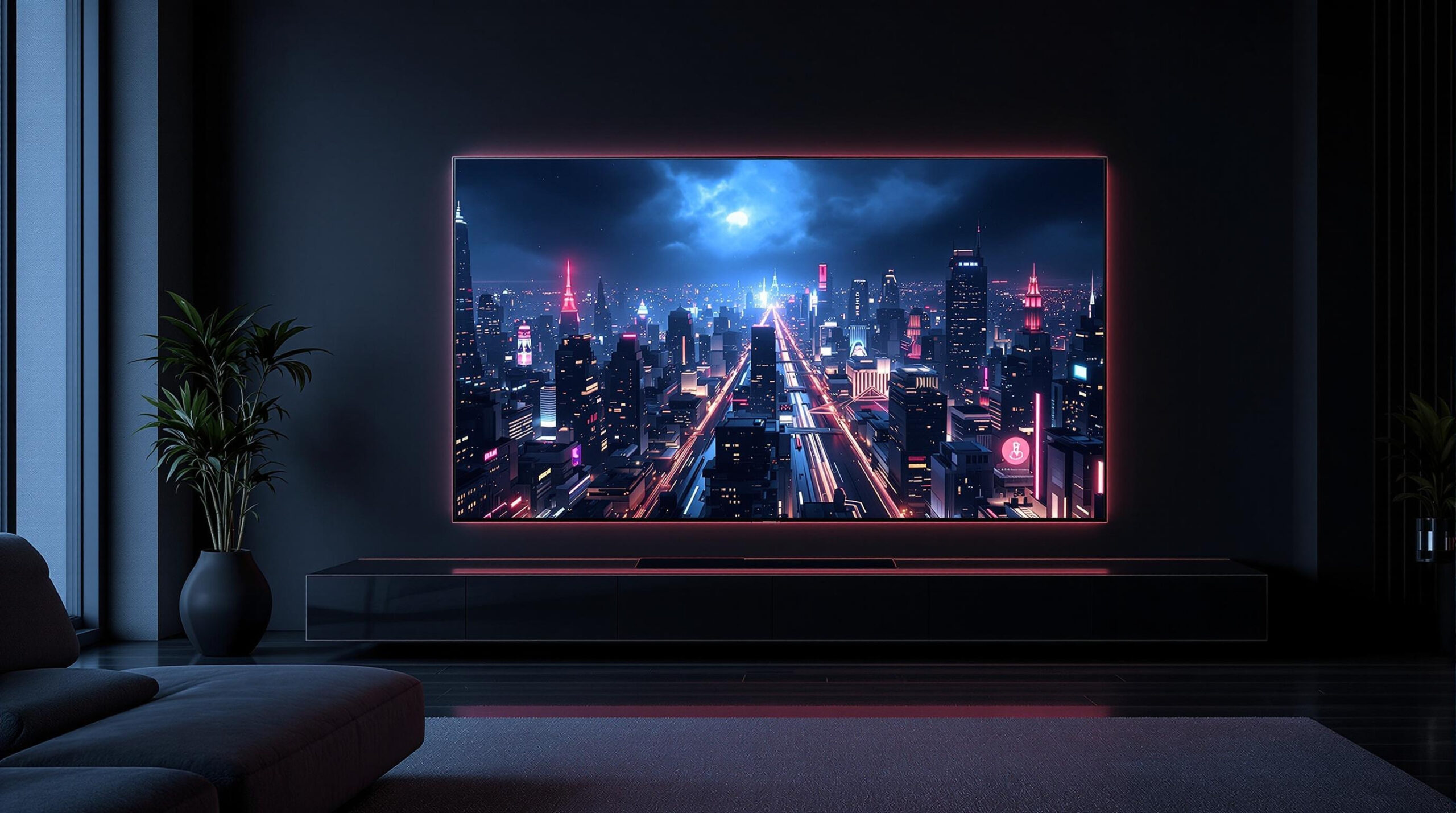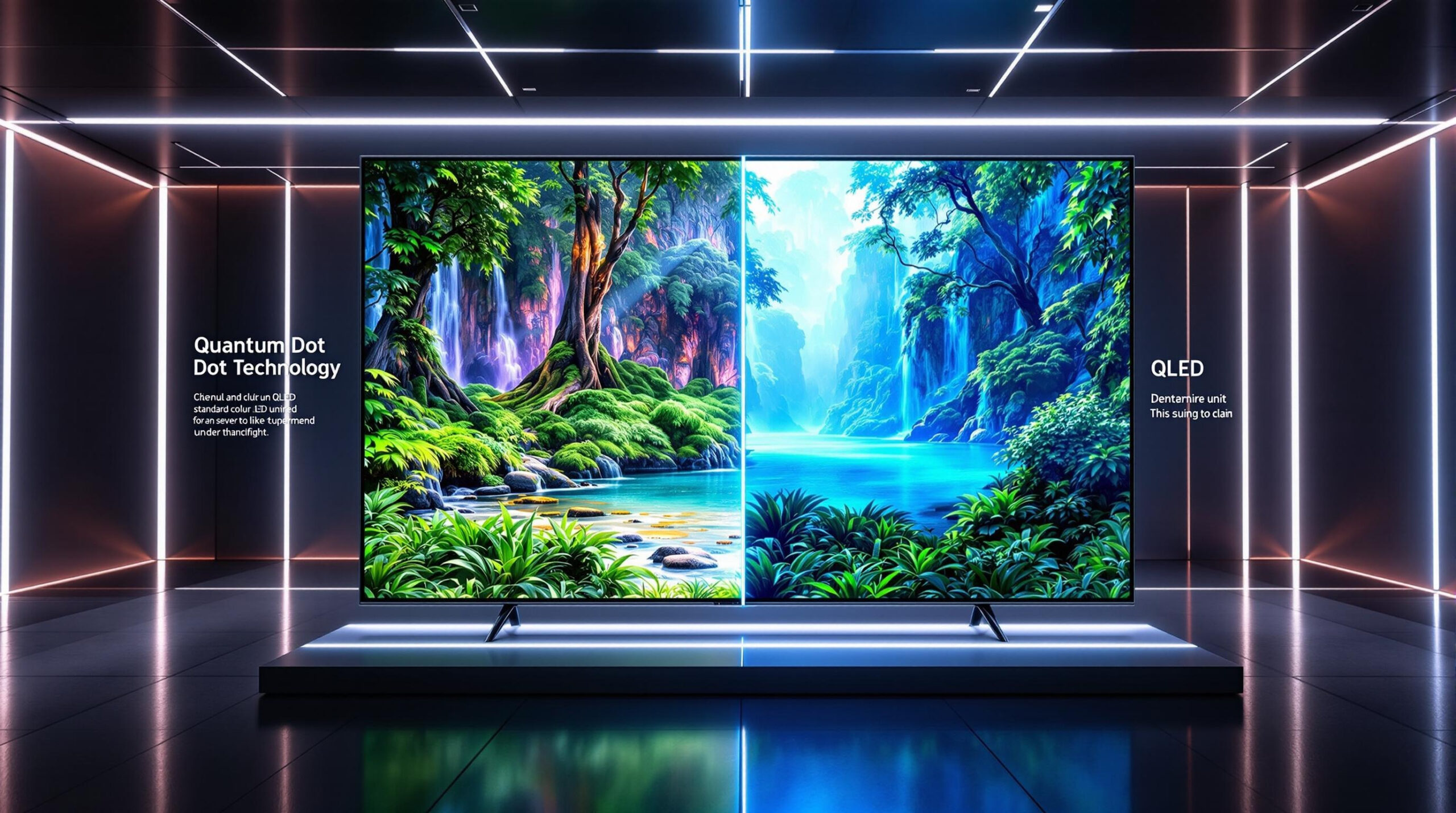In the evolving landscape of display technologies, few acronyms have sparked as much interest and confusion as QLED. Standing for Quantum Dot Light Emitting Diode, QLED is more than just marketing jargon—it’s a convergence of advanced physics, chemistry, and precision engineering that has reshaped the way we experience visual media. This article explores the scientific principles that make QLED TVs not only visually stunning but also a marvel of modern materials science and photonic engineering.
The Quantum Dot Foundation: Nanoscale Light Emitters
At the heart of QLED technology lies a groundbreaking innovation in nanomaterials: quantum dots. These are semiconductor nanocrystals, typically between 2 to 10 nanometers in diameter, that exhibit a unique property—quantum confinement. This phenomenon refers to the way electrons behave in structures that are smaller than their natural “de Broglie wavelength. ” In simple terms, when you shrink a semiconductor to the nanoscale, you change its electronic and optical properties.
Quantum dots absorb photons of one energy (typically from a backlight) and re-emit them at a different, specific wavelength. What makes them extraordinary is the precision with which this wavelength—or color—can be tuned. By altering the size of the quantum dot, manufacturers can shift the emitted color across the visible spectrum. Smaller dots emit blue light; larger dots emit red. This size-dependent emission is one of the core principles behind the stunning color reproduction seen in QLED TVs.
The Composition: Inorganic Precision at the Molecular Level
Quantum dots are typically composed of inorganic semiconductor materials such as cadmium selenide (CdSe), indium phosphide (InP), or zinc sulfide (ZnS). The core of the quantum dot is often coated with one or more shells—layers of other materials that stabilize the structure and enhance emission efficiency. This core/shell configuration improves quantum yield, which is a measure of how effectively the dot converts absorbed photons into emitted light.
These nanoscale crystals are suspended in a polymer film, which is then incorporated into the QLED panel. This film is meticulously engineered to ensure uniform distribution of dots, thermal stability, and resistance to photodegradation—factors critical to the long-term performance of the display.
From a materials science standpoint, this film is a masterpiece of synthesis and dispersion chemistry, involving colloidal stabilization, ligand exchange, and surface passivation to achieve the desired optical clarity and durability.
How QLED Displays Generate Light: The Engineering Architecture
Contrary to what the name might suggest, QLEDs are not self-emissive displays like OLEDs. Instead, they are a variant of LCD (liquid crystal display) technology that uses a traditional LED backlight. The innovation lies in how this backlight is filtered and enhanced before reaching the viewer.
Here’s a simplified breakdown of the QLED stack:
LED Backlight Unit (BLU): QLED panels typically use a blue LED backlight as the primary light source. Some high-end models now employ Mini-LEDs, allowing for more precise local dimming and better contrast control.
Quantum Dot Enhancement Film (QDEF): The blue light passes through this film containing red- and green-emitting quantum dots. These dots absorb some of the blue photons and emit red or green photons, while the rest of the blue passes through unaltered. Together, this forms a full white light spectrum with very narrow, pure wavelengths.
Liquid Crystal Layer: The resulting white light then passes through a layer of liquid crystals, which modulate the light to form images based on electrical signals. Each pixel is controlled by a thin-film transistor (TFT) in an active matrix layout.
Color Filters and Polarizers: Additional layers manage color accuracy and viewing angle performance. They act as gatekeepers for the final image output, ensuring precise hues and consistent brightness.
This architecture makes QLED essentially a quantum dot-enhanced LCD, with the quantum dots acting as highly precise spectral converters. The result is a display that surpasses traditional LCDs in brightness, color gamut, and efficiency.
Color Purity and the BT.2020 Advantage
One of the biggest selling points of QLED technology is its superior color gamut, especially its ability to approach or even exceed the BT.2020 color space. BT.2020 is a high dynamic range (HDR) color standard set by the International Telecommunication Union (ITU) and represents the future of color broadcasting.
The secret behind QLED’s expanded color range lies in the narrowband emission spectra of quantum dots. Traditional phosphor-based LEDs emit light over a broad spectrum, leading to color bleed and lower saturation. Quantum dots, however, emit light at very specific wavelengths, with minimal overlap. This allows QLED TVs to produce more distinct reds and greens, avoiding the common “washed out” look associated with standard LCDs.
With the growing availability of HDR content mastered in wide color gamuts, QLED’s ability to accurately reproduce these visuals ensures it remains at the forefront of display fidelity.
Brightness and Efficiency: Luminance Without Compromise
Brightness has long been a key advantage of QLED over OLED technology. Because QLED uses an LED backlight, it can achieve higher peak luminance levels—sometimes exceeding 1,500 to 2,000 nits in premium models. This is critical for HDR content, where bright highlights must coexist with dark shadows.
Quantum dots are also remarkably efficient photoluminescent materials. They exhibit high quantum yield (often above 90%), meaning nearly all absorbed photons are re-emitted as visible light. This minimizes energy loss as heat and contributes to the vibrant output seen on screen.
Furthermore, the inorganic nature of quantum dots makes them thermally stable, resisting degradation even under intense backlight conditions. This leads to consistent brightness levels over the life of the panel, an area where organic OLED materials can struggle due to uneven aging.
Advancements in Backlight Technology: Mini-LED and Beyond
To further enhance image quality, many high-end QLED TVs now incorporate Mini-LED backlighting. These are extremely small LEDs—often under 0.2 mm—that can be arranged in thousands of zones behind the panel. More zones mean more precise control over brightness and contrast, reducing haloing and enhancing black levels.
Mini-LED technology allows QLED to close the gap with OLED in terms of local dimming and dynamic contrast, while still preserving its brightness superiority. It’s a marriage of two technologies: the spectral purity of quantum dots and the localized control of next-gen backlighting systems.
The next phase is expected to involve MicroLEDs and electroluminescent quantum dots, where each pixel is both a quantum dot and a light emitter. This would eliminate the need for backlights and allow QLED to achieve OLED-like emissive properties with inorganic resilience.
Lifespan, Burn-In Resistance, and Durability
Because quantum dots are inorganic, they don’t suffer from burn-in the way OLEDs do. Burn-in, or image retention, occurs when static images leave a permanent mark on the screen due to uneven pixel degradation. QLED displays, using traditional LCD matrices and stable dot films, don’t face this issue, making them ideal for environments where logos, scoreboards, or user interface elements remain on screen for extended periods.
QLED panels also boast longer operational lifespans, often rated at over 50,000 to 100,000 hours. The absence of organic compounds in the emissive layers enhances their durability against UV light, oxygen, and temperature extremes.
Environmental Considerations and Emerging Alternatives
While cadmium-based quantum dots offer superior performance, there have been growing concerns over their environmental impact. Cadmium is a heavy metal and poses disposal and toxicity risks. In response, companies have invested in cadmium-free quantum dots, such as those made from indium phosphide. These newer dots offer slightly lower performance but are safer and compliant with regulations like RoHS (Restriction of Hazardous Substances).
The chemistry behind cadmium-free dots is still being optimized, particularly in terms of achieving high quantum yield and narrow emission spectra. As synthesis techniques improve, cadmium-free QLEDs are expected to match or surpass their toxic counterparts.
Quantum Dot Printing and Display Manufacturing
Traditional QLED panels use a quantum dot enhancement film, which is placed as a discrete layer in the display. However, a major area of research is inkjet printing of quantum dots directly onto the substrate—a process called Quantum Dot Color Conversion (QDCC). This method could eventually allow for higher resolution, lower production costs, and self-emissive designs.
In this approach, quantum dots are deposited pixel-by-pixel using additive manufacturing techniques. Combined with blue microLEDs or even quantum-dot LEDs (QLEDs in the literal sense), this printing technique could lead to ultra-thin, flexible, and power-efficient displays in the future.
Software and Processing: Making the Most of the Hardware
No matter how advanced the physical components are, the final image quality also depends on the image processing engine. High-end QLED TVs often include AI-based upscaling, dynamic tone mapping, and frame interpolation algorithms to enhance non-4K content, optimize HDR performance, and smooth motion.
These processors use machine learning to identify textures, edges, and noise, applying different enhancements in real time. Combined with the high brightness and color capabilities of QLED, this creates a display experience that is both technically precise and visually impactful.
Final Thoughts: The Convergence of Science and Entertainment
QLED televisions are a testament to how scientific discovery can shape everyday experiences. From the quantum mechanical behavior of electrons in semiconductor crystals to the layered engineering of light control in a television panel, every QLED TV encapsulates decades of research, innovation, and collaboration between disciplines.
For the consumer, the result is clear: a television that delivers extraordinary brightness, razor-sharp color accuracy, and long-lasting performance. But beneath the surface lies a complex interplay of quantum mechanics, chemical synthesis, and optoelectronic engineering—making QLED not just a smart purchase, but a scientific marvel.
QLED TV Reviews
Explore Philo Street’s Top 10 Best QLED TV Reviews! Dive into our comprehensive analysis of the leading QLED TV products, complete with a side-by-side comparison chart to help you choose the perfect protection for your devices.




